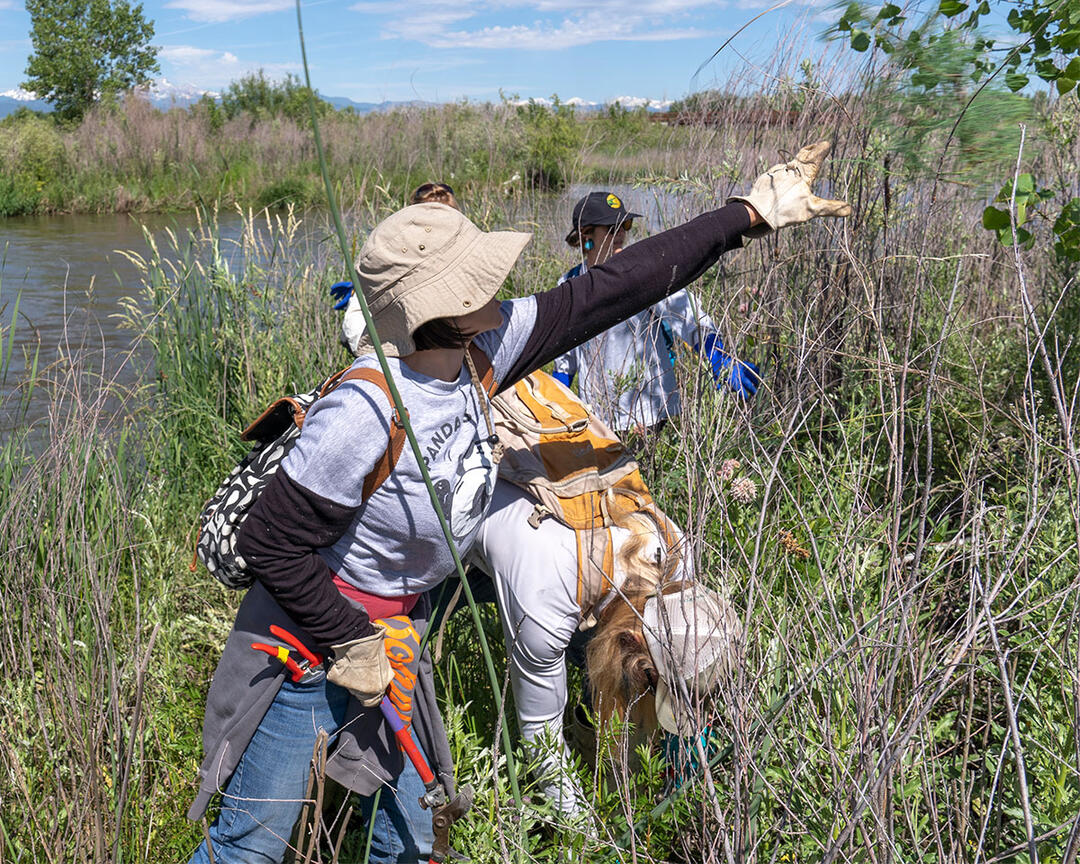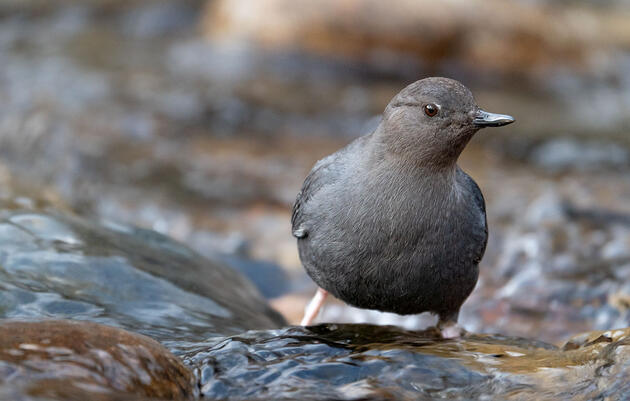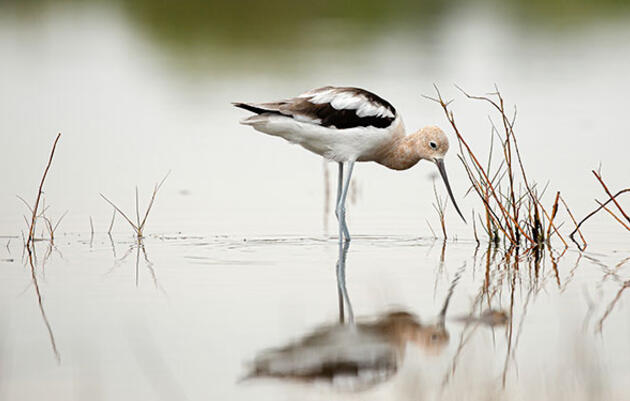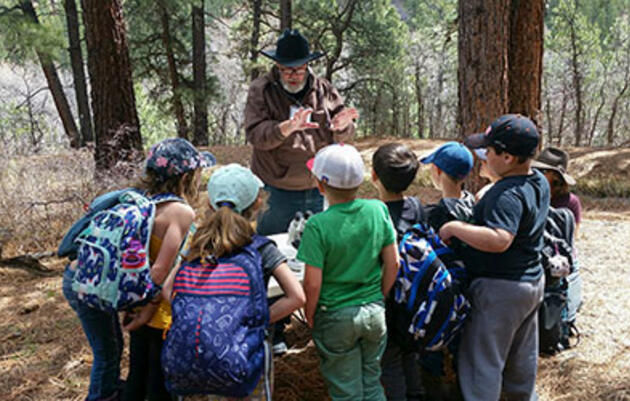Audubon is excited to share upcoming volunteer opportunities to help restore Colorado’s streams for birds, people, and the natural environment that depend on these systems. If you are passionate about environmental and wildlife conservation, enjoy spending time in nature, and want to make a tangible difference in your community, then these are perfect opportunities for you to get involved.
Volunteering for stream restoration projects offers a unique opportunity to actively contribute to the improvement of local natural environments. Streams and waterways are essential components of ecosystems, serving as critical habitat for birds and wildlife. Unfortunately, the majority of our streams have been degraded by more than two centuries of hydrologic modification, unsustainable agricultural land use practices, roads and development, channelization, mining, and climate-driven disasters. By participating in these initiatives, you become an agent of positive change, directly contributing to the improvement of these ecosystems.
Ecosystems aren’t the only beneficiaries, either. Participating in these initiatives provides an excellent opportunity to learn about ecological processes and environmental conservation techniques. Working alongside experts in the field, you will gain valuable knowledge and skills in areas such as riparian ecology, water quality management, and habitat restoration. And as a bonus, you’ll likely get some birding in, too!
Healthy streams and waterways contribute to healthy forests, provide habitat for birds and wildlife, improve water supplies and forage for agriculture, and offer clean and reliable drinking water. Together, we can work to protect and improve our streams and waterways so that we all can thrive. Please see the upcoming volunteer opportunities listed below.
Volunteer Opportunities
Wet Meadow Restoration for Greater Sage Grouse | Thursday, June 15 – Sunday, June 18 in Craig, Colorado
During this Audubon-sponsored project, volunteers will spend up to four days building rock structures to improve critical habitat for Greater Sage-Grouse in Northwestern Colorado. Wet meadows and riparian areas in sagebrush shrublands provide important brood-rearing habitat for the Greater Sage-Grouse. These habitats are also important for numerous other species including elk, mule deer, and neo-tropical migratory birds, as well as to ranchers for livestock grazing. A number of wet meadows and riparian areas, already compromised by erosion and lower water tables, are likely to be further altered by drought and high-intensity rainstorms associated with a changing climate. This project will use innovative, yet simple restoration methods—small rock structures—to raise the water table to support plants and insects needed by wildlife.
Registration and more information
Improve Critical Habitat for Greater Sage Grouse | Friday, July 7 – Sunday, July 9 in Walden, Colorado
Volunteers will spend three days building rock Zeedyk structures to restore eroded gullies on U.S. Bureau of Land Management (BLM) and State Land Board-managed lands to improve habitat for Greater Sage-Grouse. This project is a continuation of work begun by volunteers in 2020 to improve habitat along a drainage canal co-managed by private ranches, the Colorado State Land Board, and BLM.
Registration and more information
Low-Tech Process-Based Restoration | Monday, July 17 - Friday, July 21 in Mesa Verde National Park, Colorado
Volunteers will assist in implementing low-tech process-based restoration methods within Mesa Verde National Park. Scott Shaverdian and other experts will guide and lead volunteers during this project. Future additional phases for this project are likely to occur.
To register and get more information, please contact Andrew Spear at andrew_spear@nps.gov.
Diamond Peak Stream Restoration | Friday, July 21 – Sunday, July 23 and Friday, August 4 – Sunday, August 6 in Livermore, Colorado
Beaver dams provide many benefits to river systems. Installing beaver dam analogs (BDAs) helps make it easier for beavers to build dams of their own so they can sustain a healthy river ecosystem. This project will improve water quality, increase riparian habitat, and help mitigate the impacts of flooding downstream.
July registration and more information
August registration and more information
Powderhorn Riparian Restoration Project | Wednesday, July 26 –Thursday, July 27 in Powderhorn, Colorado
Volunteers will receive an introduction to restoration ecology and practical experience building low-tech, process-based restoration (LTPBR) structures including beaver dam analogs, post-assisted log structures, and other woody material structures. LTPBR is the practice of using simple, low unit-cost, structural additions to mimic ecological functions and promote healthy riparian-specific processes.
July 26 registration and more information
July 27 registration and more information
Cascade Creek Stream Restoration | Saturday, September 2 – Sunday, September 4 and Saturday, September 30 – Sunday, October 1 in Bellvue, Colorado
During this Audubon-sponsored project, volunteers will spend three days building in-stream structures to improve water quality. After the Cameron Peak wildfire, vegetation was burned so heavily that it led to major sediment runoff. The construction of in-stream structures is a natural way to help catch that sediment. These structures also help promote a healthy river and build better riparian habitat.
September 2 – 4 registration and more information
September 30 – October 1 registration and more information
Lowry Ranch Wet Meadow Restoration | Saturday, September 30 – Sunday, October 1 in Aurora, Colorado
Volunteers will spend two days building rock Zeedyk structures to restore eroded gullies on a Colorado State Land Board conservation property, Lowry Ranch. Lowry Ranch covers 25,000 acres just southeast of Denver. The ranch includes 10,000 acres of tallgrass prairie, making it one of the largest contiguous tracts of native prairie in the state. Two ephemeral creeks cross the land, fostering diverse habitats of plains, riparian, and prairie grassland ecosystems. This landscape’s diversity supports abundant wildlife such as pronghorn antelope and many resident and migratory bird species, including nesting Bald Eagles. Read more about the history of land management at the state-owned Lowry Ranch here.
Registration and more information
City of Boulder Wet Meadow Restoration 2 | Saturday, October 7 – Sunday, October 8 in Boulder, Colorado
Volunteers will join with the Cool Boulder climate initiative to build rock Zeedyk structures to improve erosion and retain more moisture north of Boulder. This is a new location for a now familiar rock-building technique that WRV has employed in various sage-grouse habitat projects in Western Colorado since 2014 with huge success.
Registration and more information
Thank you to Wildland Restoration Volunteers for hosting the wet meadow, sage-grouse, and stream restoration projects and volunteer opportunities; to High Country Conservation Advocates for hosting the riparian restoration event in Powderhorn; and to the National Park Service for hosting the restoration project in Mesa Verde National Park.










